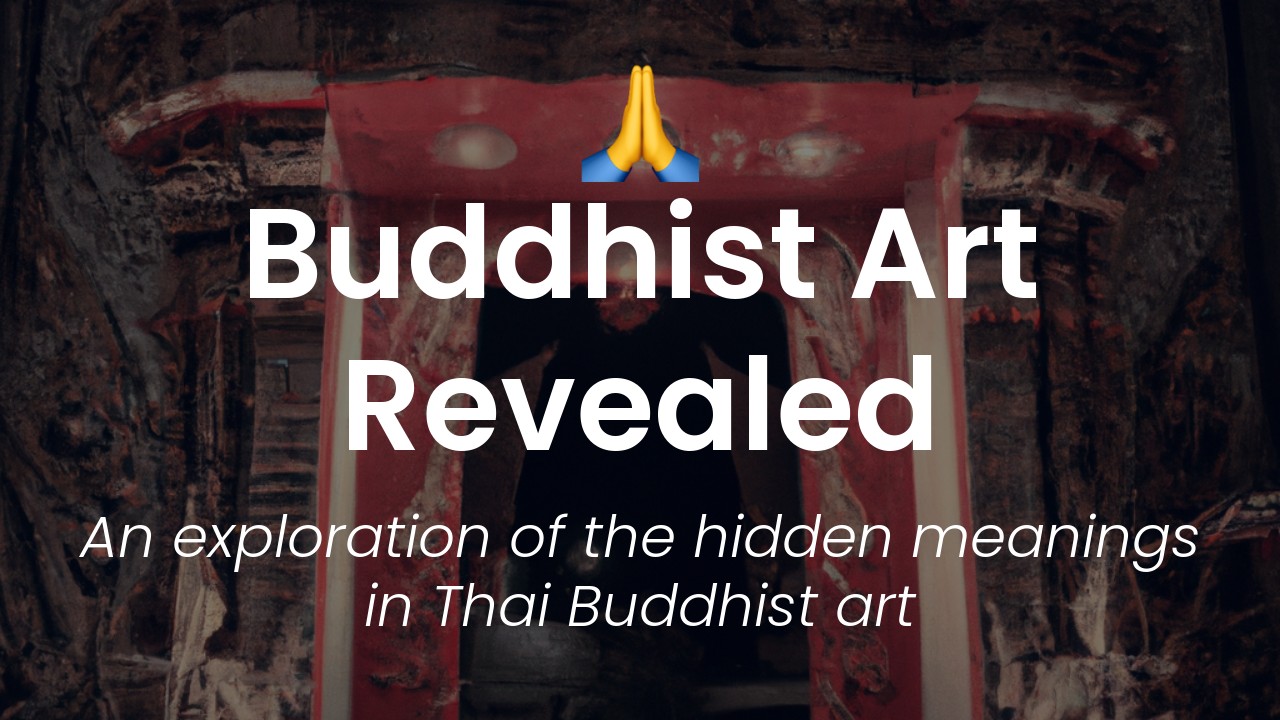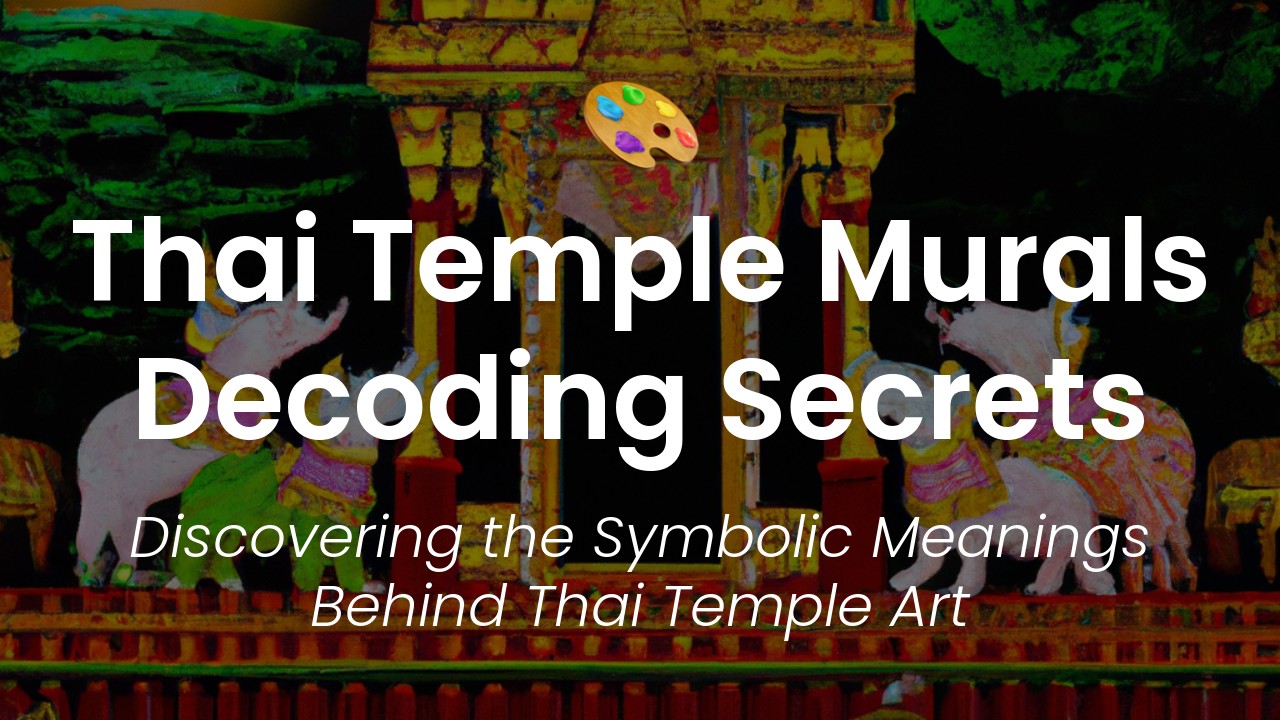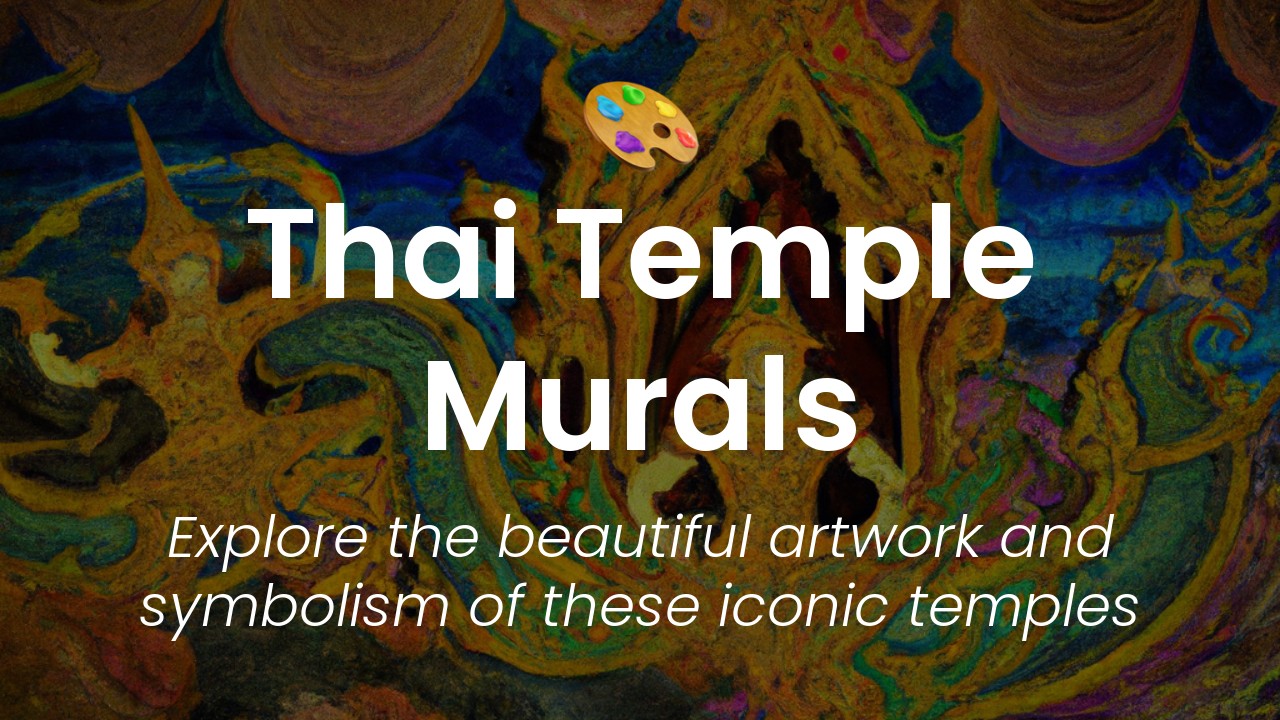As a lover of Thai culture, I find myself constantly drawn to the intricate and beautiful murals that adorn many of the temples in Thailand. The murals are not only stunning in their intricate designs and vibrant colors, but they also tell the stories of Buddhist teachings and myths, offering a glimpse into the history and values of Thai society. In this article, I want to take you on a journey to explore the alluring murals of Thai temples.
One of the best places to start is at the stunning Wat Phra Kaew, or the Temple of the Emerald Buddha, located in Bangkok. This temple is famous for its intricate murals that depict the life of the Buddha, as well as the stories of the Ramayana and other important myths. These murals are delicately painted in sparkling colors, with intricate details that are truly awe-inspiring.
Another temple worth visiting is Wat Phumin, located in Nan province in Northern Thailand. The murals here are a beautiful example of the fusion of Thai and Lao cultures, depicting the stories of the Jataka tales as well as the everyday life of the people in this remote region. The murals are painted in a unique style that is unlike any other murals in Thailand, showcasing the rich diversity of Thai art and culture.
For those who want to see murals that are more contemporary in style, the Wat Rong Khun, or White Temple, in Chiang Rai province is a must-visit destination. The temple is designed by Chalermchai Kositpipat, a renowned Thai artist whose murals inside the temple are both beautiful and thought-provoking. The murals here are painted in white, blue, and gold, with surreal imagery that explores the themes of life, death, rebirth and the human condition.
So, let's head out on an adventure to discover the stunning murals of Thai temples! In the following paragraphs, I will take you on a journey with me as we explore some of the most stunning temples in Thailand.
The Ancient Art of Thai Temple Murals
As an art lover and a cultural enthusiast, I have always been fascinated by the exquisite and intricate murals adorning the walls of Thai temples. These stunning works of art not only showcase the impressive artistic talent of Thai artisans, but also serve as a visual representation of important Buddhist teachings and beliefs.
Historically, temple murals have been a prominent feature of Thai temple architecture since the Sukhothai period (1238-1438). Over time, these paintings have evolved to reflect the changing aesthetics and cultural values of Thailand, blending traditional art forms with modern styles.
Vibrant Colors & Intricate Detailing
One of the most striking features of Thai temple murals is their unique use of colors. Vibrant and eye-catching hues are expertly blended and layered to create a mesmerizing visual experience. From majestic gold leaf and glistening silver to soft pastel shades and rich jewel tones, each color has its own significance and symbolic meaning.
In addition to bold colors, the intricate detailing found in these murals is another aspect that sets them apart from other forms of artwork. The ornate brushstrokes and fine attention to detail create an awe-inspiring level of visual complexity that is truly remarkable.
Depictions of Buddhist Teachings
Beyond their aesthetic value, Thai temple murals also offer a window into important religious teachings and beliefs. These paintings typically depict scenes from the Buddha's life or important Buddhist doctrines, conveying complex ideas and philosophical concepts in a visual and accessible way.
The stories are often presented in a sequential narrative format, allowing viewers to follow along and gain a deeper understanding of Buddhist principles and teachings. They provide a rich, immersive visual experience that makes complex spiritual concepts easy to understand.
Traditional and Modern Fusion Styles
While the tradition of temple murals is ancient, contemporary Thai artists have developed new techniques and styles to express their creativity and connect with a modern public. These new approaches to mural-making have led to a fusion of traditional and modern styles that enriches the overall experience of Thai temple murals.
For example, some artists have combined traditional mural painting techniques with digital art to create new forms of visual storytelling. Others experiment with different materials and textures to create an immersive, tactile experience. The result is a dynamic and constantly evolving artistic landscape that showcases the creativity and vibrancy of Thai culture.
Must-See Murals: Wat Phra Kaew & Wat Phumin
Two of my personal favorite temple murals in Thailand are located at Wat Phra Kaew and Wat Phumin, respectively.
Wat Phra Kaew is located in Bangkok and is home to the famous Emerald Buddha statue. The temple's mural paintings are elaborate and impeccably executed, featuring scenes from the life of the Buddha as well as intricate geometric designs.
Wat Phumin, located in the northern province of Nan, is known for its impressive murals of local culture and history. The paintings depict everyday life in the region, historical events, and local legends. The temple also features a unique mix of traditional Thai and Lanna architecture, making it a must-see destination for anyone interested in Thai culture and history.
Experts in Mural Conservation & Restoration
Preserving these cultural treasures for future generations is an ongoing challenge for Thailand, but the country has a rich and long-standing tradition of mural conservation and restoration.
Thai artisans have honed their craft over centuries, developing techniques and tools to restore damaged or faded murals with exceptional skill and precision. Many restoration projects incorporate the use of traditional materials such as gold leaf and natural pigments, ensuring that the finished work is both authentic and sustainable.
Secrets Behind the Murals
The creation of Thai temple murals requires a deep understanding of both traditional techniques and modern artistry. It is a time-intensive process that involves not only technical skill, but also an appreciation for the spiritual and cultural significance of these works.
To truly appreciate Thai temple murals, it is important to understand the complex symbolism and historical context behind each painting. There are many fascinating secrets to be uncovered, from hidden messages and subtle cultural references to the use of color as a tool for emotional and spiritual expression.
In conclusion, Thai temple murals offer a rich and immersive cultural experience that showcases the country's artistic and religious traditions. Whether you are a seasoned art aficionado or simply interested in learning more about Thai culture, exploring these marvelous works of art is a must-do for anyone visiting Thailand.





